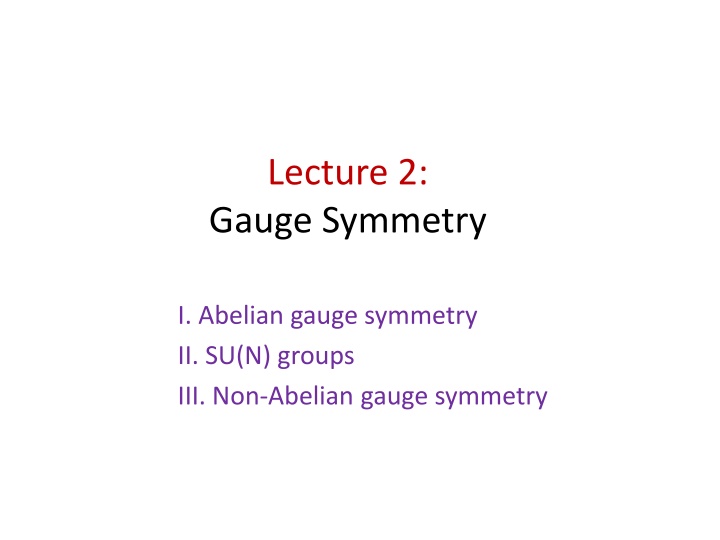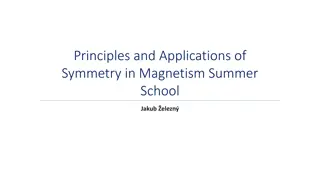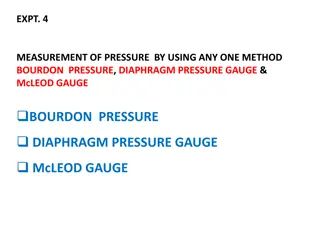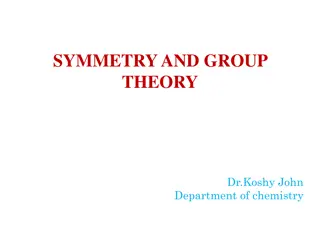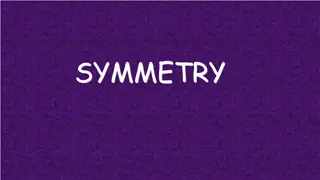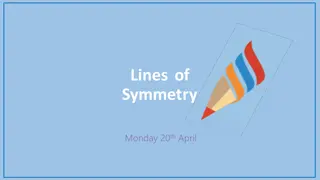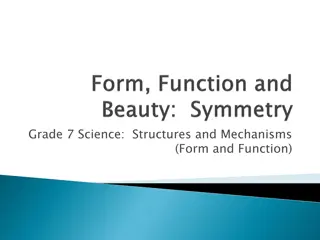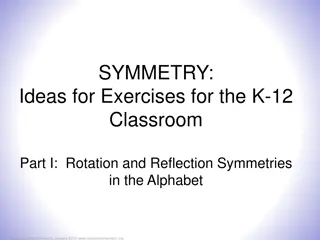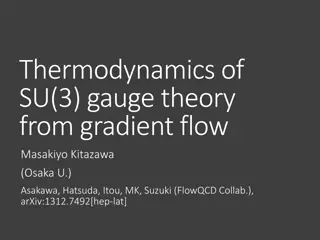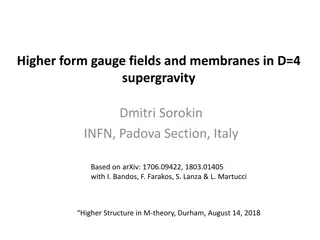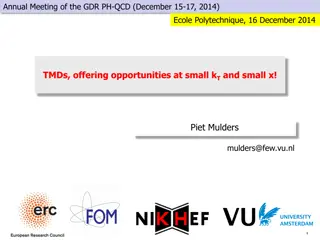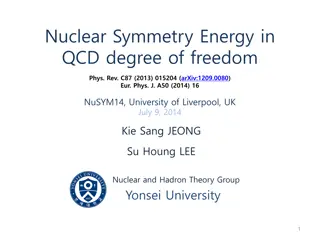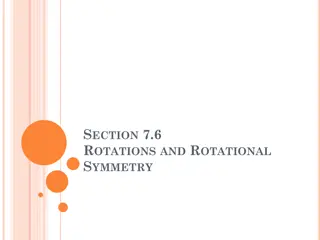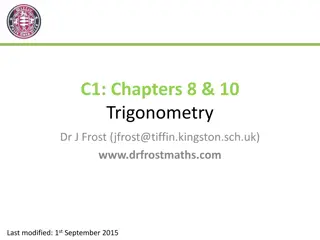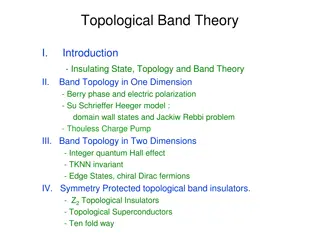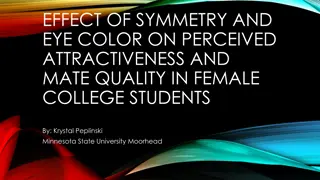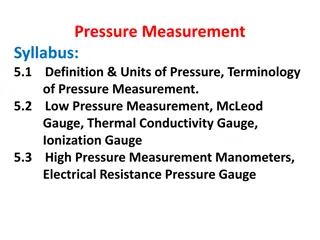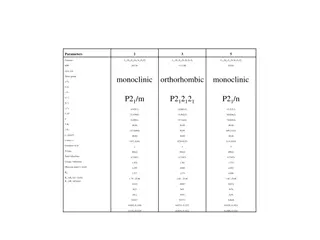Lecture 2: Gauge Symmetry
Delve into the realm of gauge symmetry and SU(N) groups through discussions on Abelian and non-Abelian gauge symmetries, as well as representations of SU(N) groups. Explore the significance of covariant derivatives, massless gauge fields, Lie groups, and various dimensional representations within this captivating field of study.
Download Presentation

Please find below an Image/Link to download the presentation.
The content on the website is provided AS IS for your information and personal use only. It may not be sold, licensed, or shared on other websites without obtaining consent from the author.If you encounter any issues during the download, it is possible that the publisher has removed the file from their server.
You are allowed to download the files provided on this website for personal or commercial use, subject to the condition that they are used lawfully. All files are the property of their respective owners.
The content on the website is provided AS IS for your information and personal use only. It may not be sold, licensed, or shared on other websites without obtaining consent from the author.
E N D
Presentation Transcript
Lecture 2: Gauge Symmetry I. Abelian gauge symmetry II. SU(N) groups III. Non-Abelian gauge symmetry
Abelian gauge symmetry Let us start with Dirac Lagrangian of a free fermion field This Lagrangian is symmetric with respect to a global U(1) transformation given by Now we consider local transformations:
Replacing the partial derivative by the covariant derivative
The gauge field is massless because the mass term is not gauge invariant. The (minimal) coupling of to the gauge field is contained in the covariant derivative and is determined by its transformation property under the gauge symmetry. The gauge field does not have the self-coupling because the gauge field does not carry a U(1) charge.
SU(N) groups A Lie group ? is a continuous group that all elements ? ? are parameterized by a set of continuous parameters Representation of the group In a neighbourhood of the identity element
Group multiplication allows us to obtain any other finite element of the group as SU(N) groups are the group of ? ? unitary matrices with unit determinant Matrices of generators are normalized as
Representation of SU(N) groups One representation of ?? ? is the fundamental or ? dimensional representation Another ? dimensional representation of ?? ? is the antifundamental or conjugate representation
?2 1 dimensional adjoint representation of ?? ? Trivial (one dimensional) representation of ?? ?
SU(2) groups J=1/2 representation J=1 representation
SU(3) groups Fundamental representation
Non-Abelian gauge symmetry Let us start with Dirac Lagrangian of a free fermion field, which is invariant under global ?? ?transformations Now we consider local transformations:
The gauge fields are massless, the coupling of to the gauge field is contained in the covariant derivative and is determined by its transformation property under the non-abelian gauge symmetry. The number of the gauge fields is equal to the number of generators of non-Abelian gauge symmetry. The gauge fields have the self-couplings.
